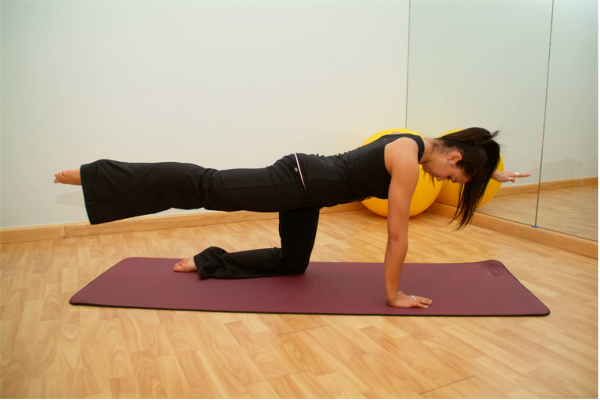Many times back pain patients come to Germany expecting to undergo surgery. Often, however, after just a short, intense period of conservative treatment, their symptoms significantly improve - sometimes up to full pain relief. Most patients with back pain respond well to conservative treatment and never need to undergo surgery.
Conservative spine treatment is a broad term for any sort of non-surgical treatment for back pain. Sometimes, small lifestyle changes such as losing weight, quitting smoking and using proper posture and correct lifting techniques can significantly reduce back pain. Other times, the treatment may need to be directed by a medical professional, such as a doctor prescribing medication or a physical therapist assigning exercises to help with the pain.
A conservative approach should always be considered as a first line of treatment.
What types of conservative treatments are there?
A conservative treatment may be as simple as improving posture or improving nutrition and exercise. Some treatments are completely non-invasive, such as physical therapy, and some are minimally invasive, such as receiving steroid injections.
Depending on the patient’s symptoms, conservative treatment for back pain may include:
- Physical therapy
- Chiropractic manipulation (manual adjustment to re-align the vertebrae)
- Steroid or anti-inflammatory injections
- Pain management techniques
- Pain medication
- Heat/cold therapy
- Massage
- Bracing
Often treatment may be a combination of several therapies in order to achieve the best result. A doctor will recommend which treatment options are best for each specific patient based on their symptoms. In order to maintain progress, patients must continue to follow their doctor’s recommendations even after they leave the hospital, or their pain may return.
The growing trend towards conservative treatment
Many patients come to us thinking they need surgery to get better, but in fact are sometimes surprised at how effective conservative treatment is. Most patients with back pain experience significant relief after conservative treatment without ever undergoing surgery.
There is a growing trend in Germany now towards more conservative treatments for back pain. Conservative treatments are easier, cheaper and have a lower risk of complications than surgery. While German doctors used to recommend surgery for many cases of chronic back pain, long-term studies showed that conservative treatment is often just as effective as surgery at relieving pain and has many benefits that surgery doesn’t have.
Now, doctors are more careful and usually only perform surgery for more severe cases or after conservative treatment doesn’t work.
At Premier Healthcare Germany, we are careful to never push people into unnecessary surgical procedures.
When is conservative treatment not an option?
In some cases, conservative treatments may be ineffective, and a more invasive surgical procedure may be needed to relieve a patient’s back pain. A surgical procedure should be the last option to consider, and as a general rule should only be considered after non-surgical options have failed to improve the patient’s pain.
More severe symptoms that indicate functional nerve damage may also mean that surgery is necessary. Loss of bladder or bowel control and numbness or paralysis in the arms and legs are both serious symptoms that may need to be treated with emergency surgery. Additionally, if the patient’s back pain is a result of spinal tumors or a physical deformity, conservative treatment is unlikely to help.
Premier Healthcare Germany has access to some of Germany’s leading spine specialists who can help determine the best treatment options for you. Contact us for more information about getting treatment for back pain in Germany.
 Astrid Eggers, Senior Case Manager at Premier Healthcare Germany, has overseen many international patients who chose to receive treatment for back pain in Germany.
Astrid Eggers, Senior Case Manager at Premier Healthcare Germany, has overseen many international patients who chose to receive treatment for back pain in Germany.
“Our case managers receive many inquiries about back problems, very often with pain radiating into one or the other leg. These patients often have restrictions in walking for a longer period of time, have tried pain medication and sometimes massages without any improvements.
When the specialists review their medical files, they very often recommend an intensive conservative treatment within a short hospital stay – three to seven days in most cases. This can be a so-called PRT-therapy or a facet joint treatment. Many patients undergo dedicated physiotherapy sessions for their complaints as well as receive useful physical exercises to continue back home in order to strengthen their abdominal and back muscles. With good compliance to the exercised prescribed by our German specialists, these small things have helped the majority of these patients a lot.”

